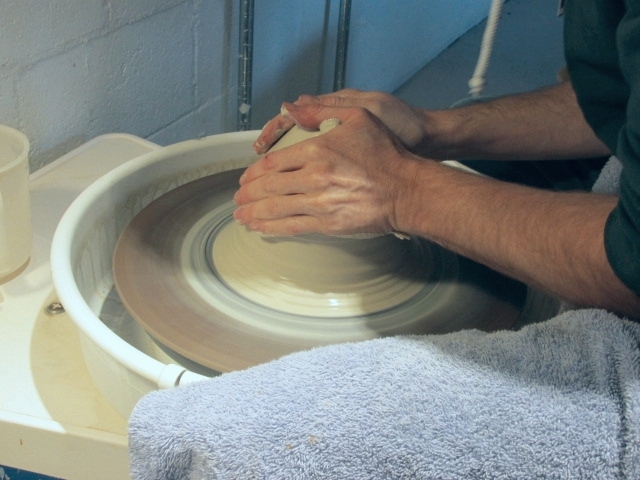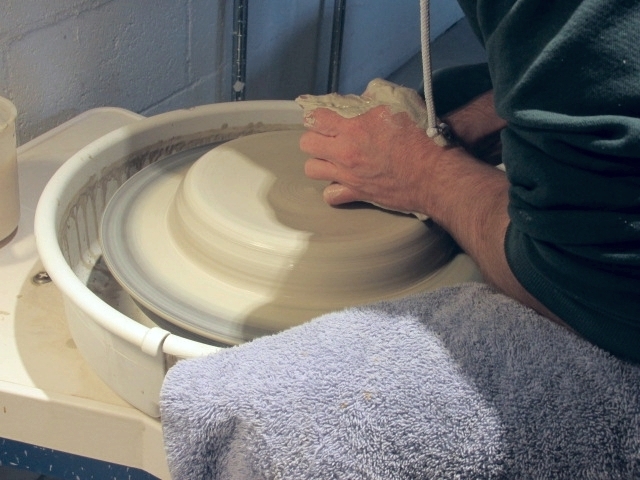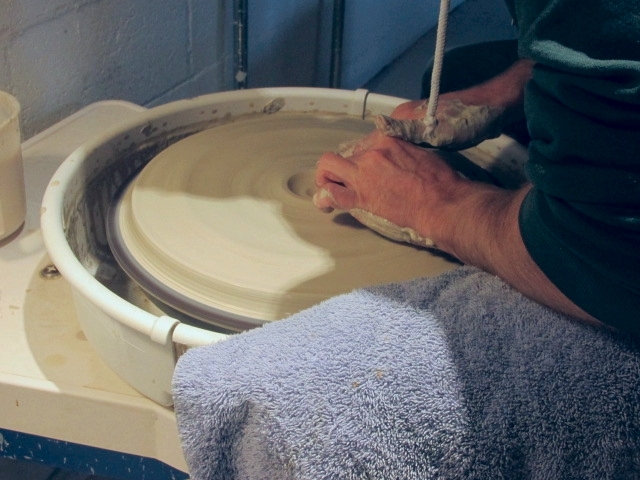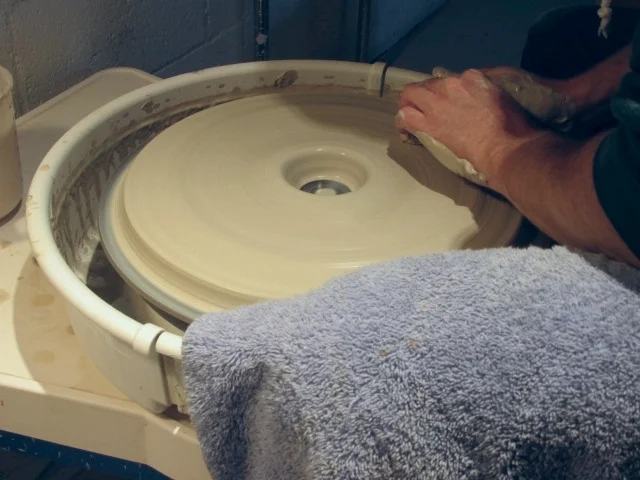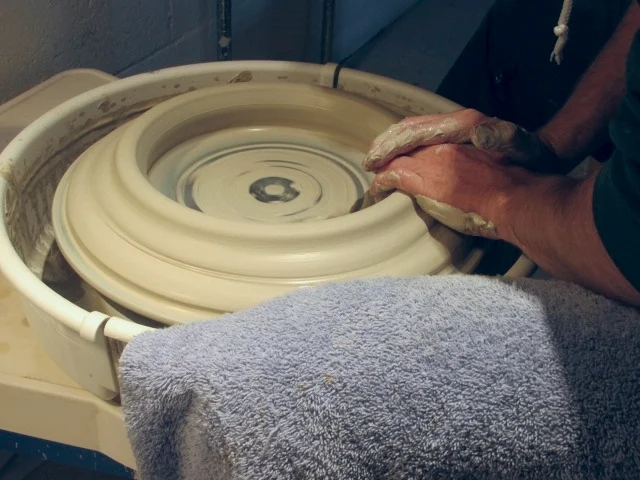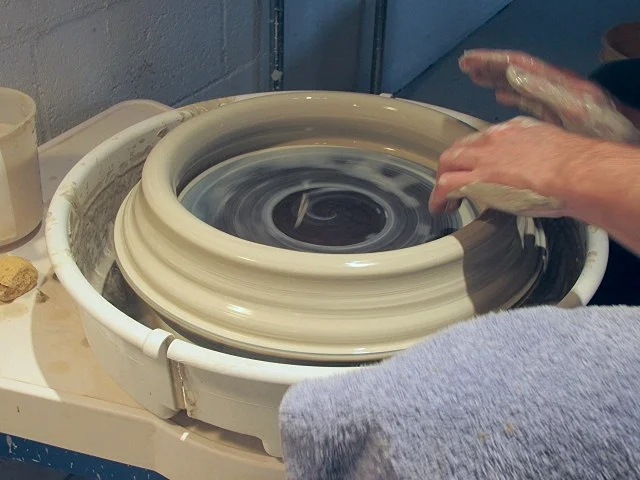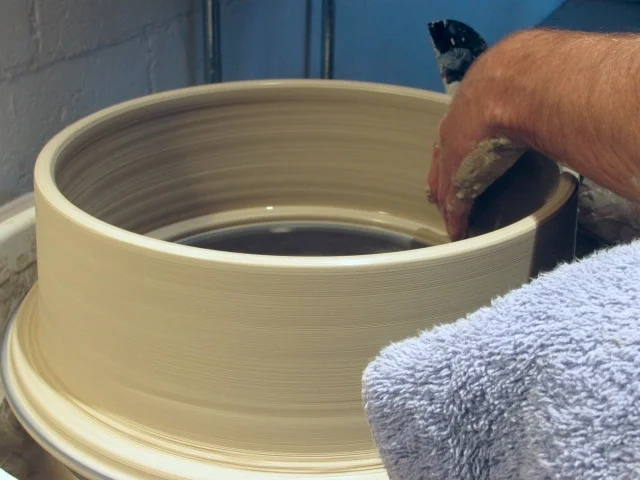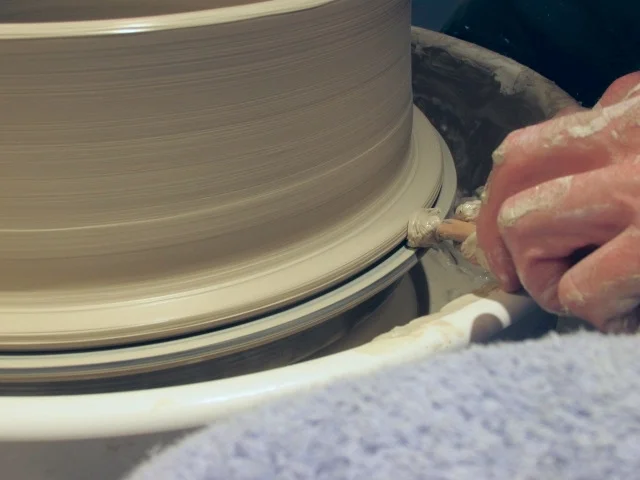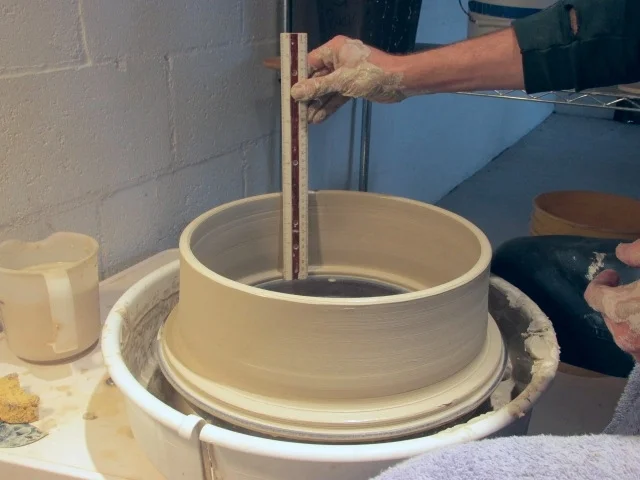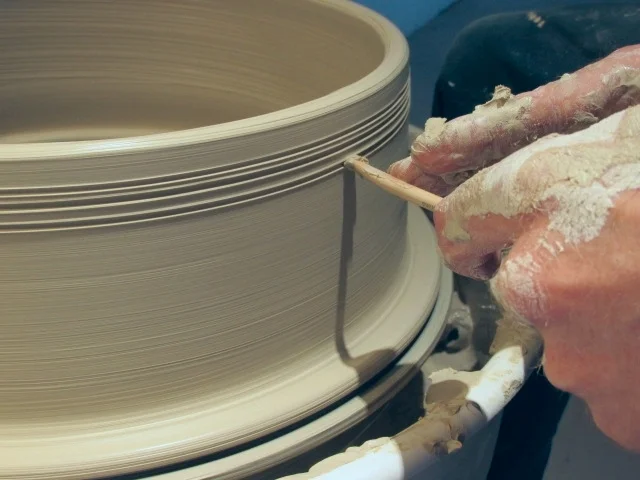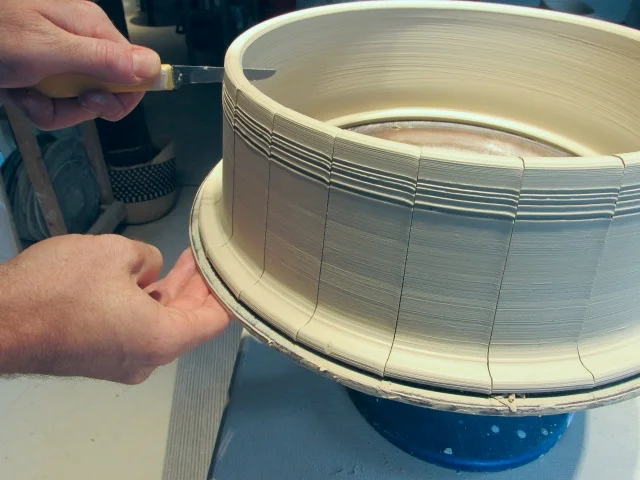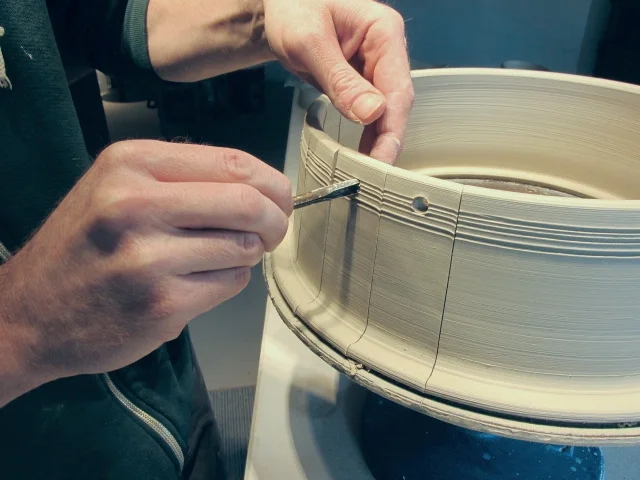Making a Test Tile:
All the test tiles made in the Glaze Gallery are made in the fashion pictured below.
Captions on the images describe each step in the making process.
Some Helpful Hints
Make your test tiles using the same process you use to make your work with. This provides a more direct transfer of information/ effort from the testing to your work. With the same reasoning, it is helpful if the tiles also have the same texture as your work.
It is helpful if the tiles have a good amount of surface areas. It is difficult to draw thorough information from tiny test tiles.
Give yourself some area to analyse, and look for variations.
Fire your tiles the same way you would your work. This means temperature, cooling, and placement. The glaze may react differently when it is vertical versus horizontal. Think about how you will employ the glaze and try to duplicate these variables when testing.

